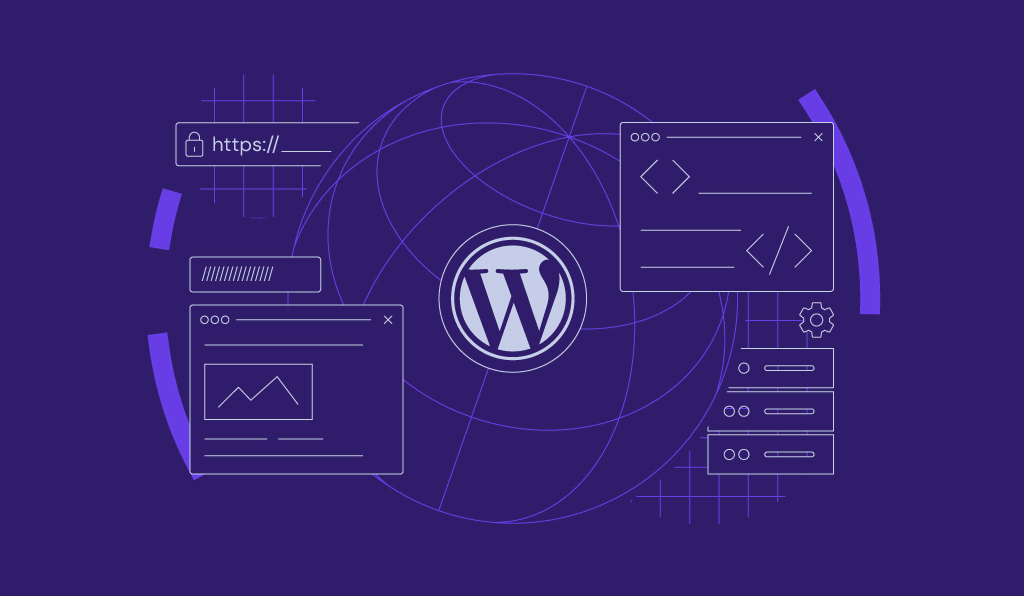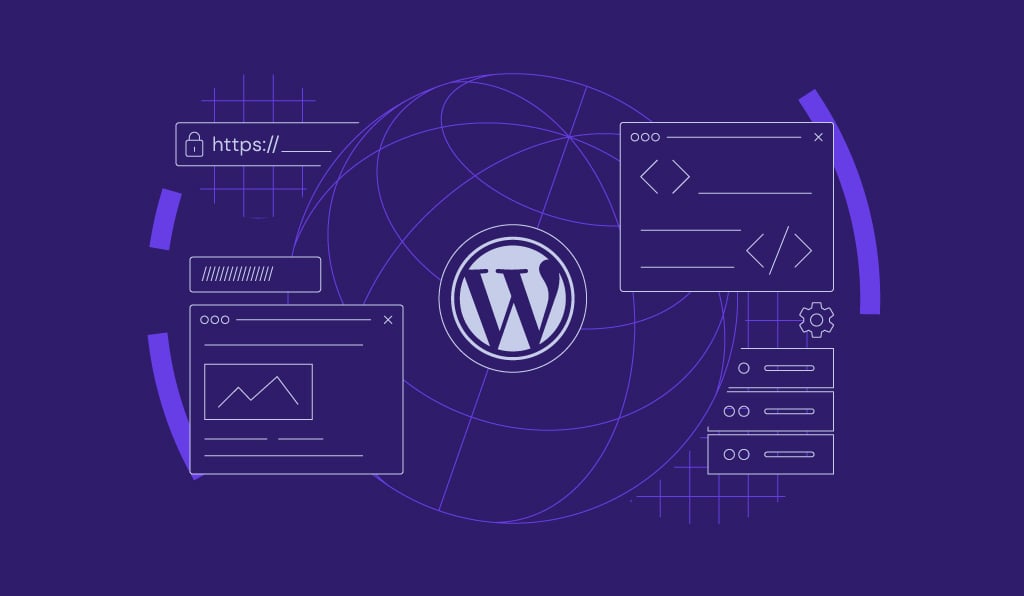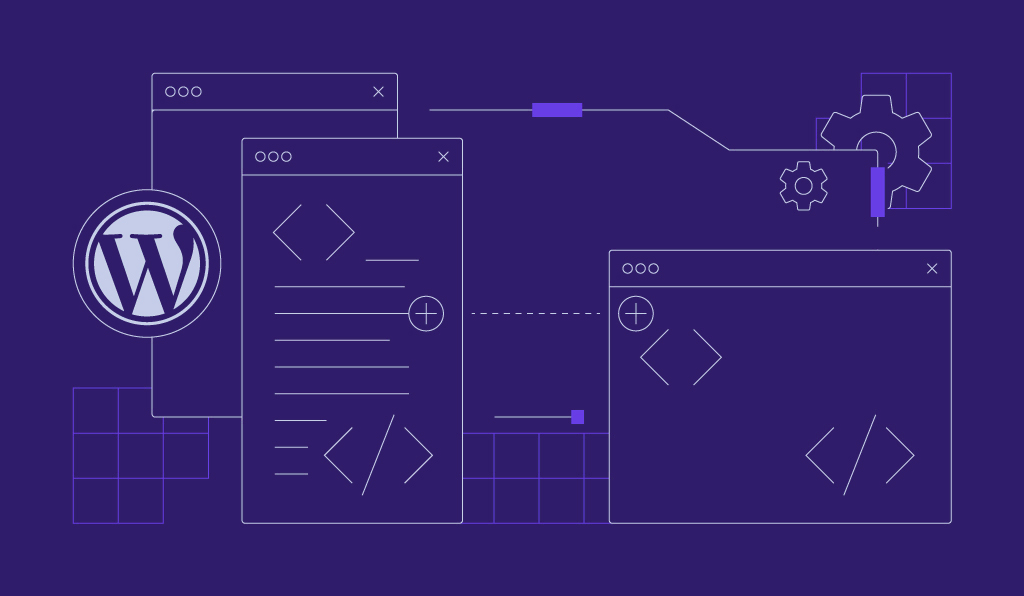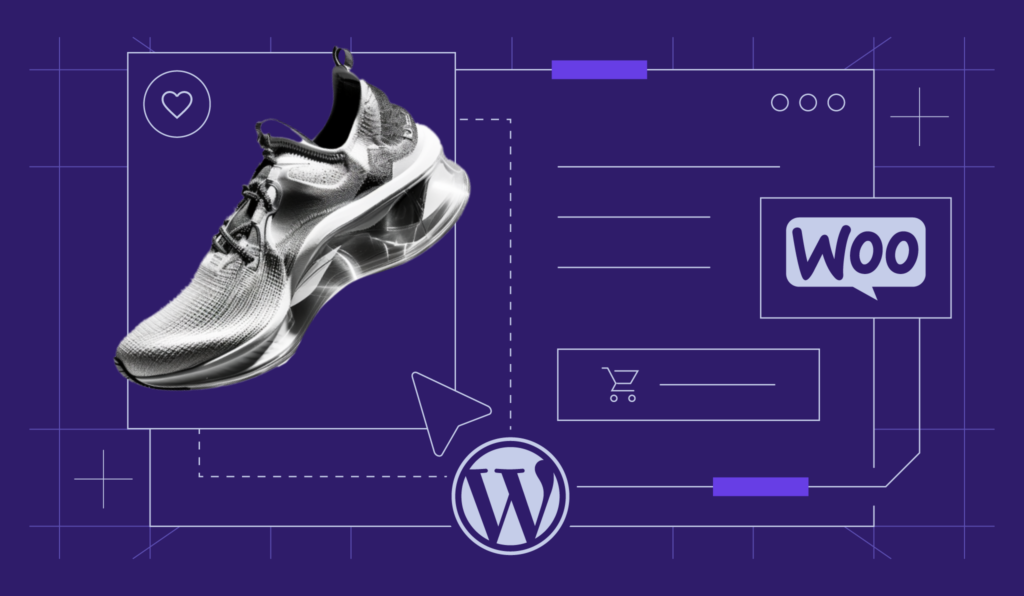How to choose a WordPress theme

A WordPress theme is a collection of files, such as templates, stylesheets, and scripts, that define the layout, colors, typography, and navigation without changing the WordPress core software or adding major functionality.
To choose a WordPress theme, start by defining your website’s purpose and target audience. Then, evaluate key factors like layout, loading speed, and mobile responsiveness. Finally, explore free or premium themes from trusted sources and test the demo before making your decision.
Choosing a WordPress theme directly affects your site’s appearance, user experience, and performance. That’s why it’s crucial you understand how to choose a WordPress theme that fits your specific needs before you commit to one.
In this article, we’ll cover the key factors to consider, where to find high-quality themes, and the main theme types, such as block vs classic and multipurpose vs niche-specific.
Before you choose a WordPress theme
Before you choose your theme, take time to clarify the following:
- Your WordPress website’s purpose and goals.
- The essential functionality you need from the theme.
- Your target audience’s demographics.
Defining these early will make the theme selection process faster, easier, and more focused. You’ll avoid wasting time on themes that don’t align with your needs.
Here’s a detailed breakdown of what to outline before choosing a WordPress theme.
Define the website’s purpose
To define your WordPress website’s purpose, start by identifying what you want your site to achieve. Are you building a personal blog, an online store, or a business site? Each goal requires different design elements, features, and user flows.
For example:
- A blog should focus on content readability and easy post navigation.
- An ecommerce site needs product grids, shopping cart integration, and payment gateway support.
- A business site must prioritize trust-building elements like testimonials and service sections.
To make this process easier, write a simple statement:
My website will [describe its primary purpose] and should help visitors [describe the main action or result].
Once you define your site’s purpose, it will be much easier to shortlist themes that support your goals.
Determine the essential functionality
Determining your website’s essential functionality involves distinguishing between the design-related elements your theme controls and the features your plugins handle.
List the design features your site must have, such as:
- Navigation – menus, headers, and footers.
- Layout options – single-column vs multi-column, sidebar vs full-width.
- Typography – font choices, font sizes, and text styles.
- Customizable widgets – elements like contact forms, social links, or search bars.
A good theme gives you the flexibility to customize these areas so they align with your site’s goals. But advanced features like full ecommerce functionality rely on plugins.
For example, if you run an ecommerce site, the WooCommerce plugin will let you add products and manage their details, while your theme will control how those product pages look and feel to users.
Understand the target audience
Your website’s design should reflect your target audience’s preferences and needs. Different demographics respond to different visual cues, layouts, and user flows.
For example, if your website targets professionals, choose a theme with a minimalist, clean design and colors that convey trust and credibility.
In contrast, avoid cluttered designs with pastel colors or unpolished elements, as they can appear unprofessional and turn away your core audience.
Consider the following factors to understand your WordPress site’s audience better:
- Age group – younger audiences often respond well to vibrant themes with bold designs and animations, while older users prefer simpler themes with easy-to-navigate layouts.
- Tech-savviness – a highly technical audience will feel comfortable with advanced features and interactivity. A general audience usually prefers a simpler, beginner-friendly interface.
- Behavior patterns – if your visitors tend to skim content, choose a theme with clean layouts and easy-to-scan design elements. If they engage deeply with long-form content, prioritize readability and clear content structure.
10 key factors for choosing the perfect WordPress theme
To pick the right WordPress theme for your website, consider these 10 key factors:
- Design and layout – evaluate the theme’s visual appeal and overall structure.
- Performance and loading speed – choose a fast-loading theme to enhance user experience.
- Mobile responsiveness – make sure the theme adapts well to various screen sizes.
- SEO-friendliness – pick a theme optimized for search engines.
- Customization options – check whether the theme offers enough flexibility to personalize your site.
- Built-in features – assess the theme’s built-in functionalities to minimize reliance on extra tools.
- Plugin compatibility – verify that the theme works smoothly with your installed plugins.
- Regular updates and security patches – select a theme that receives consistent maintenance.
- Documentation and support – look for detailed documentation and responsive support to help with setup and troubleshooting.
- User reviews – read user feedback to gauge satisfaction and spot any recurring issues.
The following sections explain each factor in more detail.
1. Design and layout
A strong design sets the tone for your website and leaves a lasting impression on visitors. Your theme should not only look appealing but also enhance the overall user experience.
Focus on these two key elements when evaluating a theme’s design:
- Layout variations – good WordPress themes offer multiple layout options. Look for flexibility in page layouts, including variations such as single-column, multi-column, or grid layouts for the homepage, blog posts, contact pages, and portfolios.
- Visual elements – evaluate the theme’s built-in design features, such as header styles, footer layouts, and elements like sliders, call-to-action buttons, and hero images. These features should align with your website’s goals and help you create a cohesive, attractive look.
2. Performance and loading speed
Your WordPress theme directly affects your website’s performance and loading speed. A well-coded, lightweight theme loads quickly, while a heavy, bloated theme slows down your site, frustrates visitors, and harms your search engine performance.
Here are two theme features that can impact loading speed:
- Image-heavy designs – large, unoptimized images add unnecessary weight to your site and slow it down. Look for fast WordPress themes that use compressed images and rely only on the visual elements essential to your site’s design and appeal.
- Built-in animations and effects – excessive animations, complex visual effects, and preloaded widgets can increase page load times. Choose a theme that lets you disable or customize these features to maintain speed without sacrificing design.
Before you commit to a WordPress theme, test its performance using tools like Google PageSpeed Insights or GTmetrix. These tools show how quickly the theme loads and highlight areas that need improvement.
After that, switch to a default theme like Twenty Twenty-Five and re-run the test. Use the results as a benchmark to evaluate your chosen theme’s performance.
💡 Pro tip
Along with choosing a lightweight, optimized theme, you can further speed up WordPress by using a reliable hosting provider, a content delivery network (CDN), and a caching plugin.
3. Mobile responsiveness
Most website traffic comes from smartphones and tablets, so your WordPress theme must look and work well on all screen sizes. A theme that breaks on mobile or feels clunky to navigate can quickly drive visitors away.
Choose a theme built with a mobile-first design approach, which prioritizes the mobile experience before scaling up to larger screens. These themes usually offer flexible layouts, responsive typography, and touch-friendly navigation.
Many themes claim to be responsive, but only hands-on testing reveals how well they actually perform. Use the tips below to assess a theme’s mobile responsiveness:
- Preview the demo on multiple devices – visit the theme’s demo site on a phone, tablet, and desktop. Check for layout consistency, text readability, and clickable buttons.
- Use browser developer tools – most browsers let you simulate different screen sizes. In Google Chrome, right-click anywhere on the screen, choose Inspect → Toggle device toolbar to see how the theme adapts to various breakpoints.
- Test for usability – make sure menus are accessible, images resize correctly, and no elements overlap or break on smaller screens.
4. SEO-friendliness
A bloated or poorly coded WordPress theme can confuse search engines and create technical issues that hurt your visibility in search results.
Themes that don’t follow clean coding standards often generate messy HTML, load unnecessary scripts, or lack basic SEO structure – all of which make it harder for search engines to crawl and index your site.
To improve SEO for your WordPress site, pick a theme that follows SEO best practices from the start. Here’s what to look for:
- Clean, lightweight code – choose themes that load efficiently without unnecessary files or inline scripts. Faster sites tend to rank higher and offer a better experience for both users and search engines.
- Schema markup support – themes with built-in schema markup help search engines better understand your content. This enhances how your pages appear in search results with rich snippets.
- Breadcrumb integration – breadcrumbs improve site navigation for users and help search engines understand your site’s structure. Some themes support native breadcrumbs or integrate easily with SEO plugins.
- Heading structure and HTML5 – a well-coded theme uses semantic HTML and proper heading tags, like H1, H2, and H3, to make your content easier to read for both users and crawlers.
5. Customization options
Easy-to-use WordPress themes let you customize your website’s look and feel without writing any code. The more design flexibility you have, the easier it is to align your site with your brand and content goals.
Many themes support different editing tools, such as:
- The WordPress Customizer – a built-in feature that lets you adjust site settings like colors, fonts, and menus with live previews.
- The block editor – WordPress’ default editor for building and editing pages using drag-and-drop content blocks.
- Page builders – tools like WPBakery or Beaver Builder give you more control over layout and design.
When evaluating a theme, check how much flexibility it offers:
- Can you change the layout structure?
- Does it let you customize typography and color schemes?
- Are there pre-built templates or starter sites you can import?
Your WordPress theme should balance simplicity and flexibility, especially if you don’t plan to work with custom code.
6. Built-in features
Many modern WordPress themes include built-in features that help you launch your website faster and reduce your reliance on third-party plugins. These features save time and add convenience, especially if you’re building your first site.
Some common built-in features to look for are:
- Sliders – showcase images or announcements on the homepage.
- Contact forms – let visitors get in touch without installing extra plugins.
- One-click demo import – quickly replicate the theme’s demo layout and design.
- Custom widgets – display social media feeds, testimonials, or recent posts.
- Shortcodes – add styled buttons, columns, or other design elements.
- Built-in SEO tools – manage basic metadata and on-page optimization.
While these features are helpful, more isn’t always better. A feature-heavy theme loads extra scripts and styles, which can slow down your site.
Select a WordPress theme that includes only the features you need and balances functionality with performance.
7. Plugin compatibility
No matter how feature-rich your theme is, you’ll still rely on plugins to handle essential website functions like SEO, backups, caching, or ecommerce.
If your theme doesn’t work well with key plugins, your site will face issues like broken layouts, duplicated features, or script conflicts. These problems hurt performance and make long-term maintenance more difficult.
Use the tips below to test a WordPress theme’s plugin compatibility:
- Check the theme documentation – most quality themes list the plugins they officially support, such as WooCommerce or Contact Form 7.
- Read user reviews – look for feedback that mentions plugin conflicts or smooth integrations.
- Use a staging site – before going live, install the theme in a WordPress staging environment and test it with your core plugins to catch conflicts early.
- Try the free version first – if it’s a premium theme, use the free or demo version to see how well it handles the plugins you plan to use.
8. Regular updates and security patches
WordPress themes that receive regular updates and active maintenance are more secure because developers can patch vulnerabilities as they arise. In contrast, outdated themes often contain security flaws that attackers can exploit.
According to WordPress statistics, attackers target WordPress sites frequently – on average, every 32 minutes.
A well-maintained theme typically:
- Supports the current WordPress version.
- Receives updates at least once every six months.
- Offers a changelog or version history.
- Responds quickly to known vulnerabilities.
Before installing a theme, check the last update date and confirm that it’s compatible with the latest WordPress version. Also, review the developer’s update history to see how often they release fixes and improvements.
To keep your site safe after publishing it, make sure to update your WordPress theme, plugins, and core files regularly. Keeping everything current is one of the most effective ways to prevent security breaches.
9. Documentation and support
WordPress themes with strong documentation and reliable support are easier to use and more likely to scale with your website over time.
A feature-rich theme with clear, well-organized documentation saves time and reduces guesswork, whether you’re customizing layout options or troubleshooting issues.
On the other hand, even the most user-friendly theme can become frustrating without proper documentation and support.
Good theme documentation should include:
- Step-by-step setup instructions.
- Explanations of key features and settings.
- Screenshots or video tutorials.
- Guidance on recommended plugins and compatibility.
In addition to documentation, responsive support from the theme developer is just as important. If you encounter a bug, run into a compatibility issue, or need help with customization, fast and helpful support can make a big difference.
When choosing a WordPress theme, check:
- Whether the theme offers public documentation or a knowledge base.
- If users praise the support team in reviews.
- What support channels are available, such as email, forums, or live chat.
- Whether support is included with your purchase or subscription.
10. User reviews
User reviews offer honest, valuable insights into a WordPress theme’s performance in real-world use. They reveal how the theme behaves after installation across different hosting environments, plugin setups, and content types.
Reading theme reviews helps you:
- Spot recurring issues like bugs, poor support, or slow performance.
- See how well the theme integrates with common plugins.
- Understand whether the theme remains reliable over time.
To get the most value from reviews, read them critically. Use the tips below:
- Check the review date – WordPress themes evolve quickly. A complaint from two years ago may no longer apply. Focus on recent reviews that reflect the current version.
- Look for patterns – one negative review isn’t always a red flag, but repeated issues are. Pay attention to consistent feedback.
- Check reviewer profiles – if possible, visit the reviewer’s website to see how the theme looks and performs in a live environment.
- Balance praise and critique – a five-star rating is great, but read the full review. It may still mention limitations that matter to you.
- Watch out for fake reviews – don’t rely solely on perfect ratings. Some may come from fake accounts or paid reviewers. Look for vague comments, repeated wording, or clusters of similar reviews posted close together.
Where to find quality WordPress themes
To find quality WordPress themes, stick to trusted marketplaces.
Some recommended WordPress theme marketplaces include:
- WordPress.org – the official directory for free themes reviewed by the WordPress team.
- ThemeForest by Envato – a popular marketplace offering thousands of premium themes.
- TemplateMonster – a well-established source for both free and premium themes.
- Creative Market – a curated marketplace featuring premium WordPress themes by independent designers.
The following are trusted providers where you can buy WordPress themes:
- Elegant Themes – creator of the popular Divi theme and builder.
- Astra by Brainstorm Force – known for speed and strong compatibility with page builders.
- GeneratePress – focuses on performance and clean code.
- Themeisle – offers beginner-friendly, lightweight themes like Neve and Hestia.
Avoid downloading themes from unofficial or unverified websites. These sources often include broken code, malicious scripts, or outdated files that can put your site at risk.
Also, never use nulled or pirated themes. They seem like a shortcut offering a paid theme for free, but often contain hidden malware, security vulnerabilities, or tampered code that can compromise your entire WordPress site.
Types of WordPress themes
WordPress themes generally fall into three main categories:
- Free vs premium themes – free WordPress themes are cost-effective and typically simpler. Premium themes include more features, greater customization, and dedicated support.
- Block vs classic themes – block themes are built for Full Site Editing (FSE), giving you more control through the block editor. Classic themes rely on the traditional Customizer and PHP templates.
- Multipurpose vs niche-specific themes – multipurpose themes offer flexibility for a wide range of websites. Niche-specific themes are designed for particular industries or use cases.
Each theme type serves a different purpose and suits different user needs, depending on your site goals, technical skills, and design preferences.
Understanding these categories helps you choose a WordPress theme that fits your project more effectively. Below, we’ll take a closer look at each type.
Free vs premium themes
Free and premium themes each offer advantages and trade-offs related to budget, features, customization, and support.
Free themes
Free WordPress themes are available in the official WordPress.org theme directory and are reviewed by the Themes Team for basic coding standards and security. They’re a great option if you’re launching a personal blog, portfolio, or simple website on a budget.
What you typically get with free themes:
- Zero cost.
- Simpler design and fewer features.
- Limited or community-based support.
- Fewer customization options.
- Less frequent updates or slower release cycles.
Well-known free WordPress themes include the Twenty Twenty series and the free versions of Astra and Neve.
Premium themes
Premium WordPress themes come with advanced features, greater design flexibility, and dedicated support. You can purchase them from trusted providers like ThemeForest or directly from developers.
Most premium themes cost between $30 and $100 for a one-time license or annual subscription, depending on the provider and included features.
💡 Pro tip
Some premium themes offer a free version in the WordPress.org directory. Try it out before deciding to buy WordPress themes.
Premium themes typically offer:
- Full-featured design and layout control.
- More frequent updates and security patches.
- Access to support and documentation.
- Pre-built templates or demo content.
- Extra features like page builders, sliders, or SEO tools.
Notable premium WordPress themes are Divi, Enfold, and GeneratePress Premium.
🤔 Which should you choose?
Block vs classic themes
In WordPress, block and classic themes use two different technical structures. Both can power a great-looking site, but they differ in how you design and customize your content.
Block themes
Block WordPress themes are built for Full Site Editing (FSE), a feature introduced in WordPress 5.9. FSE lets you design every part of your site, like headers, footers, and templates, using blocks.
These themes rely entirely on the block editor, so you can customize layouts, colors, fonts, and global styles directly from the WordPress dashboard without writing code.
You can expect the following from block themes:
- FSE support.
- Editable templates and template parts, like headers and footers.
- A consistent design system using global styles.
- Real-time visual editing in the block editor.
Popular block WordPress themes such as Twenty Twenty-Five, Neve FSE, and Blockbase.
Classic themes
Classic WordPress themes follow the traditional WordPress structure used before FSE. They use PHP template files and rely on the Customizer for styling and layout changes.
You can still use the block editor to create content, but you’ll need to edit theme files or install plugins to make deeper layout changes.
Here’s what to expect from classic themes:
- Limited template editing without custom code.
- Styling changes through the Customizer or custom CSS.
- Strong plugin compatibility, especially with older tools.
- A familiar structure for experienced developers.
Widely used classic WordPress themes are Twenty Twenty-One, Astra, and Kadence.
🤔 Which should you choose?
Multipurpose vs niche-specific themes
Choosing between multipurpose and niche-specific WordPress themes depends on your website’s purpose, required features, layout preferences, and how much customization you want.
Multipurpose themes
Multipurpose WordPress themes are flexible and support various website types. Whether you’re building a blog, business site, portfolio, or online store, these themes offer broad layout options, demo templates, and integration with popular plugins.
Their all-in-one nature makes them a great choice if you want to reuse the theme across different projects.
What most multipurpose themes offer:
- Multiple demo sites or starter templates.
- Support for many use cases, such as blogs, stores, and landing pages.
- Integration with page builders like WPBakery or Divi.
- Flexible design settings and global styling options.
Top multipurpose WordPress themes include Astra, OceanWP, and Divi.
Niche-specific themes
Niche-specific WordPress themes are tailored to a specific industry, profession, or website purpose. These themes include layouts, design elements, and features that directly match the needs of their target audience.
For example, a restaurant theme includes menu templates and reservation forms, while a photography theme features full-screen galleries and image sliders.
These aspects are common in niche-specific themes:
- Purpose-built templates and design components.
- Relevant content structures and widgets.
- Streamlined setup focused on one specific use case.
- Minimal customization needed out of the box.
Some niche-specific WordPress themes worth exploring are Zeko (nonprofits), VW Fitness Gym (fitness), and Rosa LT (restaurants).
🤔 Which should you choose?
What’s next?
After you install your WordPress theme, the real work begins: turning that design into a functional, engaging website.
The next steps to set up and launch your WordPress site are listed below:
- Install essential plugins – add the best WordPress plugins for SEO, backups, caching, and contact forms to improve performance and usability.
- Customize the theme – adjust colors, fonts, and layouts to match your brand. Use the Customizer, block editor, or a page builder, depending on what your theme supports.
- Add your content – create key pages like Home, About, and Contact. Add blog posts, product listings, or portfolio items based on your site’s purpose.
- Optimize for speed and SEO – compress images, enable caching, and install SEO plugins to boost loading speed and search visibility.
- Preview on all devices – check how your site looks on desktop, tablet, and mobile. Make any necessary adjustments to fix layout or readability issues.
- Go live – once everything is ready, launch your WordPress site and start sharing it with the world.
By following these steps, you’ll build a WordPress website that looks great, performs well, and supports your goals.
All of the tutorial content on this website is subject to Hostinger's rigorous editorial standards and values.



